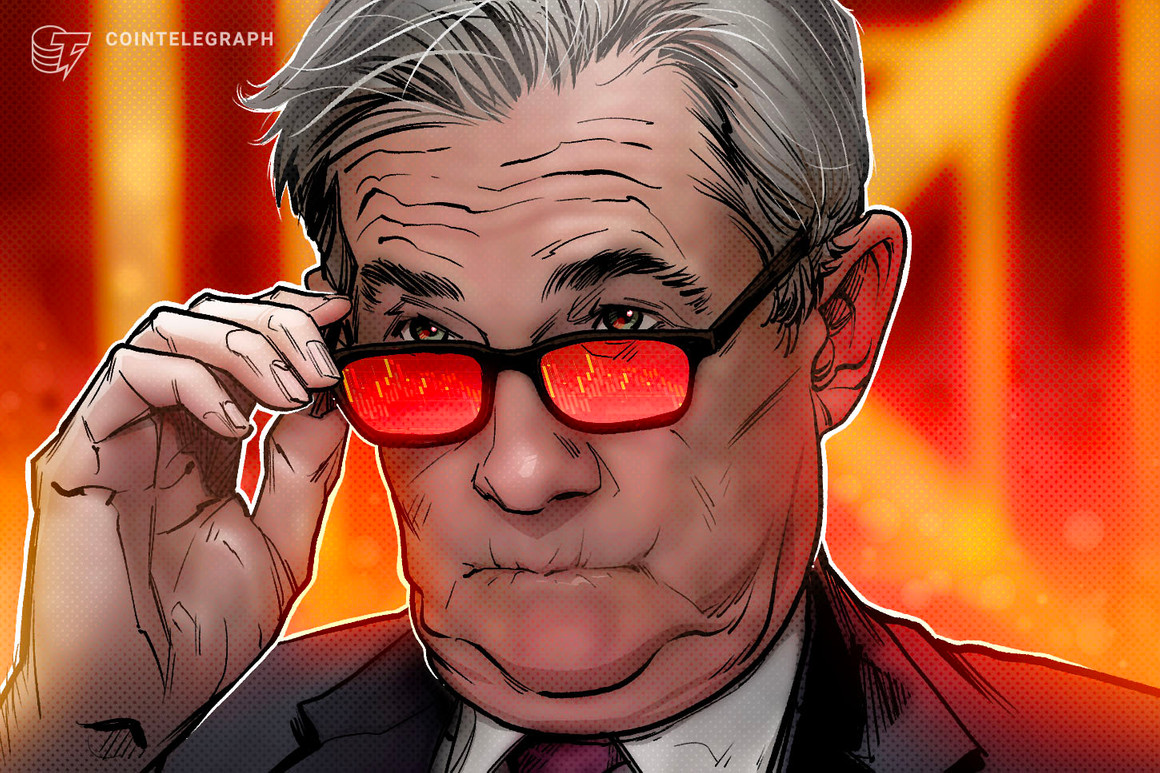Over the last 12 months, market analysts and commentators have relentlessly predicted that the United States is heading for a recession. However, the
Over the last 12 months, market analysts and commentators have relentlessly predicted that the United States is heading for a recession. However, the U.S. economy has been remarkably resilient and defied the forecasts. Indeed, we now have the U.S. Federal Reserve discounting a recession from its current modeling, as Fed Chair Jerome Powell emphasized at the Fed’s July press conference.
There is, however, much more to this story.
For many, the fastest increases in interest rates ever, record-high inflation and the unexpected banking collapses of Silvergate Bank, Signature Bank, First Republic and, most recently, Pacific Western are major reasons to cite indicating a recession is close.
Related: The Federal Reserve’s pursuit of a ‘reverse wealth effect’ is undermining crypto
The technical definition of a recession is two straight quarters of declining gross domestic product (GDP). Still, the real test is a significant decline in economic activity that spreads across the economy and includes employment, consumer spending, retail sales and industrial production.
U.S. GDP declined in both the first and second quarters of 2022. The drop can be attributed to the changes in trade and business inventories, which don’t necessarily reflect underlying economic health. Moreover, the labor market remains strong, consumer confidence is improving, and retail sales are increasing again. These are all signs that the economy remains strong, and there is division on whether a recession is inevitable in this unusual economic environment.
In the third quarter of 2022, GDP growth was 3.2%; in Q4, 2.6%; and in Q1, 2%. As such, we were already in a technical recession. The latest GDP numbers released on July 27 show the U.S. economy grew by 2.4% in the second quarter of this year — an uptick.

Does that mean we’re out of the woods? As ever, it’s just not that simple. It seems clear we are already in a technical recession. Yet, the healthy economic picture doesn’t track with this. Are we in a whole new economic territory?
Shrinking buffers
During COVID-19, consumers shored up around $2.5 trillion in excess savings from a combination of hunkering down at home and trillions of dollars in Federal stimulus packages designed to keep workers afloat despite layoffs and businesses closing. However, that cushion has been slowly depleted to around $1.5 trillion due to high, rapidly increasing interest rates and stubborn inflation, according to Moody Analytics.
Nonetheless, there is still a lot of pent-up demand among consumers. Recently, we’ve seen a surge in spending, while consumers are now carrying the highest levels of household debt ever. Along with increasing housing prices — despite rising interest rates — and companies holding back capital expenditure due to the increasing cost of capital, this debt pile is piling pressure on the U.S. consumer.

As consumer spending makes up 70% of U.S. GDP, it is vital it stays healthy if the U.S. is to avoid a recession. Employment is also a key indicator to watch right now, and the rate of unemployment remains low at 3.6% while wage increases are at 5.7%, but still growing. All this suggests that while the economy is losing steam, we are not in a recession yet.
Most analysts are, though, still expecting a recession in the second half of the year. The expectation is that the tightening of monetary policy that has been implemented over the past year has a long lag effect that hasn’t been fully accounted for. Indeed, Raphael Bostic at the Atlanta Fed estimates it could take 18 to 24 months to see the full effect of this tightening cycle in the economy.
Yields don’t lie
At the same time, banks are pulling back lending due to the deposit runs that led to the collapse of several regional banks. We also see an inverted yield curve appearing — one of the most reliable indicators of a coming recession.
Related: What will drive crypto’s likely 2024 bull run?
Normally, interest rates are higher for longer-term bonds than short-term ones, as investors need to be rewarded more as their money is locked in for longer periods. Right now, though, the yield on a two-year Treasury bond is well above that for 10-year bonds and has been for quite some time. This has been a consistent signal of a recession, as investors move money into safer longer-term assets when the economic outlook looks worse, which pushes their prices up and yields down.
Beyond this, as much as headline Consumer Price Index (CPI) inflation has been declining, core inflation (which excludes volatile energy and food prices) remains hot at 4.8% — well above the Fed’s 2% target. While the cost of goods has fallen, the price of services remains high, driven by the tight labor…
cointelegraph.com
